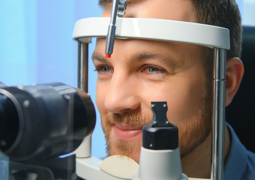The world is full of colour. Life is permeated by vivid and brilliant colours, and colour can have an impact on what we see and how we perceive the world. But what if you see colours in a different way than most people?
What is colour blindness?
Colour blindness is the inability to distinguish between colours – most often red and green. The term “colour blindness” is a misnomer, however; the condition is more accurately called “colour deficiency.” Contrary to popular belief, colour blind people can still see colours. Total colour blindness is actually quite rare.
We see colours because of the cone cells in our eyes. We have three types of cone cells: red, green, and blue. If one or more of the cone cells are missing, aren’t working, or aren’t working properly (ie. they detect a different colour than they’re supposed to), a person is colour blind/colour deficient.
There are degrees of colour blindness. For example, someone with a mild colour deficiency may be able to see colours in a well-lit room but will have issues seeing colours in poor light. There are also those who can’t distinguish between colours in any light, though they can technically see colours – they’re just not the same colours that non-colour-blind people can see. For example, to a colour blind person, a pale blue might look lilac, or yellow might look green.
Types of colour blindness
The most common form of colour blindness is red-green colour blindness, which is when people have difficulty distinguishing between reds and greens. Blue-yellow colour blindness is the second type, which is when people have difficulty seeing blues and yellows. It’s less common than red-green colour blindness.
The final type of colour blindness, monochromacy (achromatopsia), is total colour blindness. (This is rare.) People with monochromacy see in shades of grey.
Causes of colour blindness
For most people, colour blindness is inherited; since the colour blindness gene is in the X chromosome, colour blindness is a genetic condition that’s inherited from the mother. As a result, colour blindness is more prevalent in men than in women – only about 0.5% of women are colour blind, versus 8% of men.
Some medical conditions, such as multiple sclerosis, cataracts, and diabetes may also cause colour blindness. Aging can cause it as well.
Symptoms of colour blindness
The biggest symptom of colour blindness is confusing colours. If you’re colour blind, you may have difficulty telling the difference between red and green or between blue and yellow. In other cases, people may tell you that the colour you’re seeing is wrong.
The symptoms of colour blindness are the same, regardless of age. However, it’s very important to get children tested if colour blindness is a possibility, since it can contribute to learning difficulties.
Diagnosing colour blindness
An Optometrist can determine if you or someone in your family is colour blind. When you go for an eye exam, you’ll be given some colour tests, such as the Ishihara colour test. (You may already be familiar with this test – it’s the one with the colour plates, where you identify the numbers you see.)
Treatment
There’s no cure for colour blindness, nor there is a true form of treatment. However, many people who are colour blind develop coping strategies, such as using colour identifying apps or labeling clothes with their colours.
Do you have questions about colour blindness? Let us know!
References and further reading
National Eye Institute: Facts About Color Blindness
American Academy of Ophthamology: What is Color Blindness?















